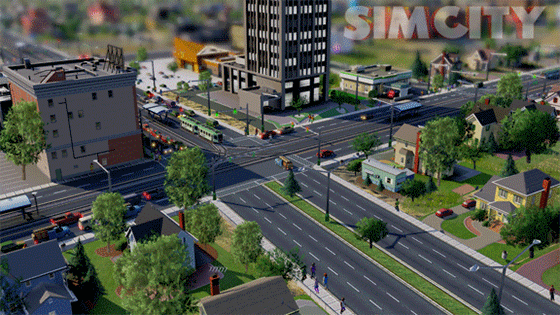Er is weer een nieuwe blog verschenen van SimCity, en dat vind natuurlijk niemand een probleem! Dit keer gaat het over het verspreidings-systeem van de stad, als ik het zo goed vertaald heb.
Hoe dan ook, zodra de Nederlandse er is melden we dat uiteraard meteen. En je kan in het ‘klik hier om meer te lezen gedeelte’ het volledige stuk tekst lezen!
Hi everyone! I’m Tyler Thompson, the Gameplay Producer here at Maxis and I really enjoy helping the team make the new SimCity into a great game.
The new SimCity’s simulation is driven by Sims, road networks and traffic. I enjoy explaining it with a biological metaphor: The roads are the city’s arteries and veins. The Sims circulate through those roads. They help keep the city alive by going to work, making factories run, keeping stores open, taking home money, going shopping with money, etc… Power, water, and sewage also flow under the roads. Almost every building relies on a vehicle to be effective: garbage trucks, police patrol cars, coal delivery trucks, school buses, taxis and more. The result is a city where the streets are filled with a variety of vehicles and pedestrians, streaming from place to place and keeping the simulation alive.
Traffic jams strangle like a heart attack. Several times, I have looked up from decorating a casino to see dreaded lines of red tail lights. The consequences are pretty dire: Ambulances don’t get to injured Sims before they die. Police don’t make it to the bank in time to stop a robbery. The coal power plant shuts down from lack of workers. Homes and factories are starting to become abandoned at the edges of the city. In a panic, I start demolishing troublesome intersections, replacing roads, and adding new avenues across town. I also apply some civic “blood thinner”: I create a mass transit system featuring shuttle buses, large inter-city buses, light rail and heavy rail. This usually clears the major arteries and gets things flowing again.
Combine this circulatory system with our curvy road tool, and it means that you can make functional, organically shaped cities. We’ve made face-shaped cities, concentric rings, guitar-shaped cities, and on and on. Often, the city’s topography encourages curves: River-side towns can have a snaking boardwalk. Mountain-side cities bend around the base. Lake-side cities with a high-wealth district hug the waterfront. Yeah, I love to play optimized grids, but this game is frequently tempting me to throw away the ruler and start painting roads with a brush.
These curvy, organic cities can be effective because the simulation isn’t about distances – it’s about flow. When you start to understand this, it totally changes how you lay things out. When I place a fire station, I usually try to find a place that is central, well connected but not near heavy traffic. When I create a central avenue, I often limit the number of intersections with it so that cars don’t wait for light after light. I sprinkle commercial sectors at the ends of residential roads to encourage pedestrian traffic. As the city grows, I watch for the long line of red brake lights and plop down bus stops like crazy.
Many times, I find myself just sitting back and watching the flow.
